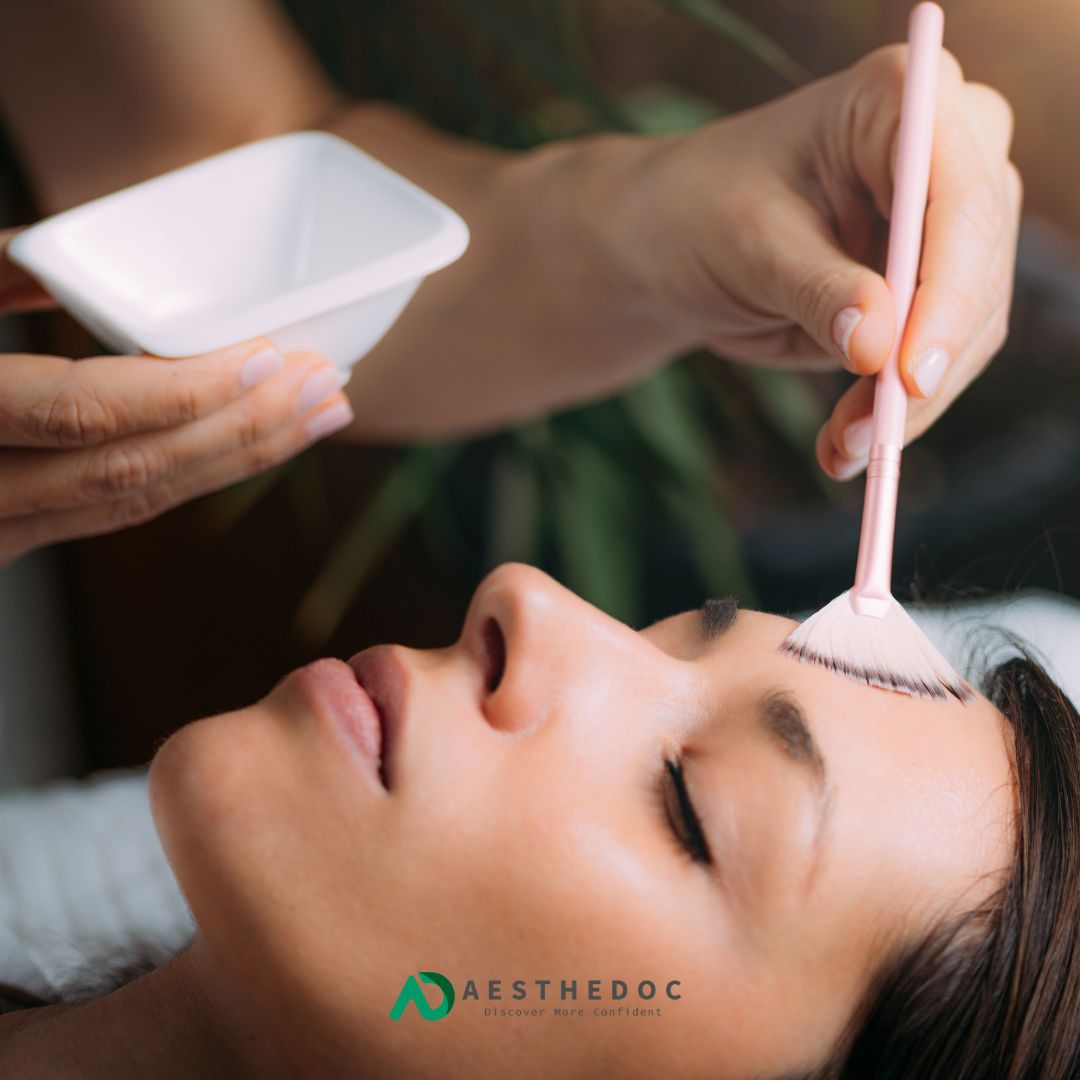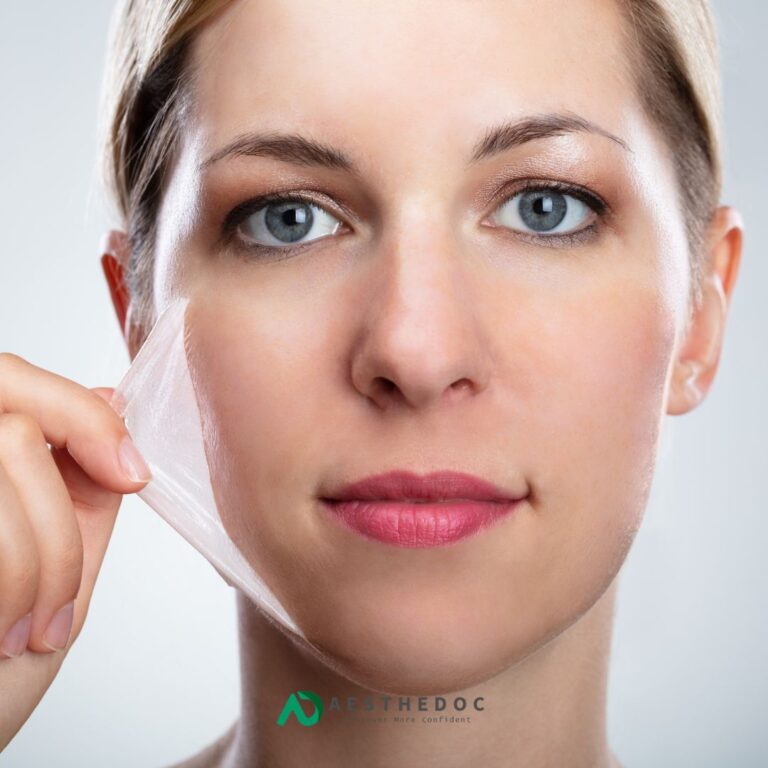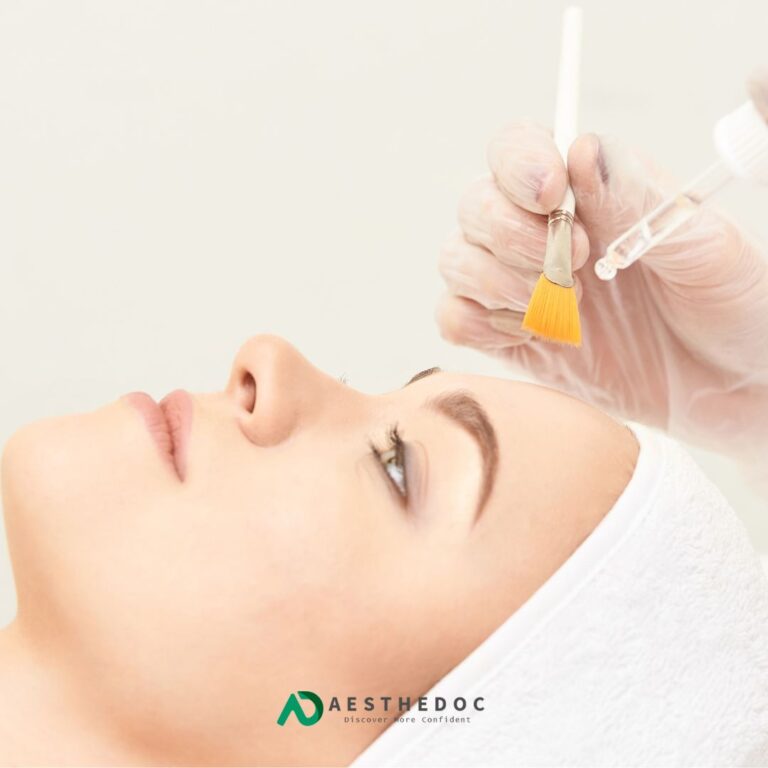Chemical peels have gained significant popularity in the world of skincare for their ability to rejuvenate the skin, treat various concerns, and promote a radiant complexion. In this article, we will explore what a chemical peel is, how it works, and the recommended frequency for undergoing this treatment.
What Is a Chemical Peel?
A chemical peel is a dermatological treatment designed to improve the skin’s appearance by removing the outermost layer of dead and damaged skin cells. This is achieved through the application of a chemical solution tailored to an individual’s skin type and concerns.
Chemical peels come in different types and intensities:
- Superficial Peels: Target the outer layer of the skin (epidermis) and are best for mild discoloration and rough texture.
- Medium Peels: Penetrate the middle layer of skin, addressing issues like age spots, wrinkles, and moderate discoloration.
- Deep Peels: Reach the deeper layers of the skin and are ideal for more severe skin concerns such as deep wrinkles and scars.
How Does a Chemical Peel Work?
A chemical peel works by applying a solution that exfoliates the skin and stimulates new cell growth. Here’s a step-by-step breakdown of the process:
- Preparation: The skin is cleansed thoroughly to remove dirt and oil.
- Application: A chemical solution (like glycolic acid, salicylic acid, or trichloroacetic acid) is applied to the skin. The type of solution depends on your skin concerns and desired results.
- Exfoliation: The solution works by loosening the bonds between dead skin cells, causing them to shed naturally over the following days.
- Healing and Renewal: As the outer layer peels away, the underlying, fresher skin is revealed. This process promotes collagen production and improves skin tone, texture, and elasticity.
The procedure typically takes 30-60 minutes, and downtime varies depending on the intensity of the peel.
How Often Can You Get a Chemical Peel?
The frequency of chemical peels depends on the type of peel and your skin’s needs:
- Superficial Peels: These are gentle and can be repeated every 2-4 weeks.
- Medium Peels: Because they go deeper into the skin, it’s recommended to space these treatments 3-6 months apart.
- Deep Peels: These are performed only once every few years due to their intensity and long recovery period.
Your dermatologist or skincare specialist will assess your skin and recommend an appropriate schedule. Overdoing chemical peels can lead to skin sensitivity or damage, so it’s essential to follow professional advice.
Benefits of Chemical Peels
Chemical peels address a wide range of skin concerns, including:
- Reducing fine lines and wrinkles
- Improving acne scars and blemishes
- Evening out skin tone and reducing hyperpigmentation
- Enhancing skin texture for a smoother appearance
What Is a Chemical Peel, How Does It Work, and How Often Can You Get One?
Chemical peels have gained significant popularity in the world of skincare for their ability to rejuvenate the skin, treat various concerns, and promote a radiant complexion. In this article, we will explore what a chemical peel is, how it works, and the recommended frequency for undergoing this treatment.
What Is a Chemical Peel?
A chemical peel is a dermatological treatment designed to improve the skin’s appearance by removing the outermost layer of dead and damaged skin cells. This is achieved through the application of a chemical solution tailored to an individual’s skin type and concerns.
Chemical peels come in different types and intensities:
- Superficial Peels: Target the outer layer of the skin (epidermis) and are best for mild discoloration and rough texture.
- Medium Peels: Penetrate the middle layer of skin, addressing issues like age spots, wrinkles, and moderate discoloration.
- Deep Peels: Reach the deeper layers of the skin and are ideal for more severe skin concerns such as deep wrinkles and scars.
How Does a Chemical Peel Work?
A chemical peel works by applying a solution that exfoliates the skin and stimulates new cell growth. Here’s a step-by-step breakdown of the process:
- Preparation: The skin is cleansed thoroughly to remove dirt and oil.
- Application: A chemical solution (like glycolic acid, salicylic acid, or trichloroacetic acid) is applied to the skin. The type of solution depends on your skin concerns and desired results.
- Exfoliation: The solution works by loosening the bonds between dead skin cells, causing them to shed naturally over the following days.
- Healing and Renewal: As the outer layer peels away, the underlying, fresher skin is revealed. This process promotes collagen production and improves skin tone, texture, and elasticity.
The procedure typically takes 30-60 minutes, and downtime varies depending on the intensity of the peel.
How Often Can You Get a Chemical Peel?
The frequency of chemical peels depends on the type of peel and your skin’s needs:
- Superficial Peels: These are gentle and can be repeated every 2-4 weeks.
- Medium Peels: Because they go deeper into the skin, it’s recommended to space these treatments 3-6 months apart.
- Deep Peels: These are performed only once every few years due to their intensity and long recovery period.
Your dermatologist or skincare specialist will assess your skin and recommend an appropriate schedule. Overdoing chemical peels can lead to skin sensitivity or damage, so it’s essential to follow professional advice.
Benefits of Chemical Peels
Chemical peels address a wide range of skin concerns, including:
- Reducing fine lines and wrinkles
- Improving acne scars and blemishes
- Evening out skin tone and reducing hyperpigmentation
- Enhancing skin texture for a smoother appearance
Conclusion
A chemical peel is a powerful treatment for anyone looking to achieve smoother, clearer, and more youthful-looking skin. By understanding how chemical peels work and how often they should be performed, you can make informed decisions about integrating them into your skincare routine. Always consult a certified professional to customize the treatment for your specific needs and goals.
Ready to revitalize your skin? Talk to a licensed dermatologist today to discover which type of chemical peel is right for you!






